I'm a journalist based in New York City and the author of SHADE: THE PROMISE OF A FORGOTTEN NATURAL RESOURCE, coming July 22, 2025 from Random House.I was a former staff writer at The Counter, where I reported on food. I've also written for the New York Times, L.A. Weekly, Places Journal, Slate, CityLab, Landscape Architecture Magazine, Art in America, Artnet, Commercial Observer, and others. And I'm a graduate of Vassar College and the Columbia Journalism School. Email me at [email protected].
Don't wanna be here? Send us removal request.
Text
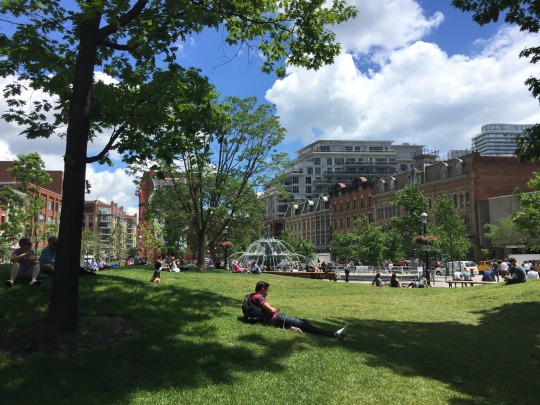
When cities plan to mitigate extreme heat, many draw from a familiar playbook: more trees, more reflective surfaces, and more air conditioning. City officials in Toronto are exploring a different strategy: Changing the orientation, massing and materials of new developments to improve outdoor thermal comfort.
Despite the dire warnings of future heat, the officials I spoke to remain stuck in the past — reluctant to approve buildings that improve summer comfort, if they worsen it in winter. "We're not in a winter shadow emergency," scoffed a planning expert. "We're in a climate emergency." I wrote about the project for the May 2024 issue of Landscape Architecture Magazine.
0 notes
Photo

For years, L.A.’s leaders have promised to better protect bus riders from the sun, and last week they delivered, in the form of a 24-inch wide perforated screen called La Sombrita. In unison, Angelenos are saying the puddle of shade it casts for one or two bus riders is not enough — and the designers are defending it as a prototype and saying more shade is on the way. I wrote about the debacle for Slate and talked about it on Axios Today and 99% Invisible.
0 notes
Photo


When California is gripped by extreme heat, and the electric grid is pushed to the brink, the state responds by issuing a flex alert: a plea to residents to shut their windows and close their blinds in a desperate attempt to save energy and avert catastrophe. It seems like a strange directive necessitated by apocalyptic climate change, but back when air conditioning wasn't so cheap, the ability to shade on command was a defining feature of modern architecture. For Assemble Papers, I visited Richard Neutra's Hall of Records building, built in 1961 and 1962 in downtown Los Angeles. The building’s two sets of massive, motorized louvers could save a lot of energy — if only someone would turn them on.
0 notes
Photo

It’s always been hot in Phoenix, but with temperatures rising above deadly levels and more warming to come, America’s desert metropolis has opened an office of heat response and mitigation to tackle the issue. The office has two responsibilities: lower heat deaths and illnesses on hot days, and long-term, to rebuild the city in a way that lowers local temperatures. More sidewalks could look like Washington Street, pictured above, boasting not just more trees but also man-made shade structures. I wrote briefly about the office—the first of its kind, and it won’t be the last—for the April issue of Landscape Architecture Magazine.
2 notes
·
View notes
Photo
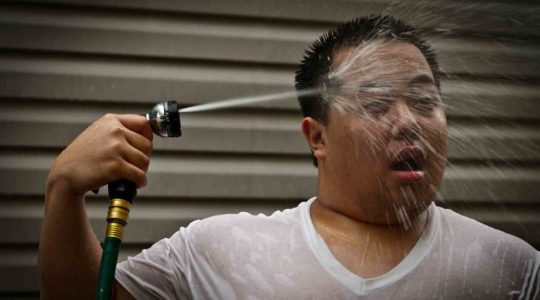
Last fall, I was honored and delighted to be an MIT Knight Science Journalism project fellow, reporting from Los Angeles and conducting in-depth research into shade, extreme heat, and how this rising climate threat is slowly being incorporated into urban planning and civic engineering. For the fellowship, I blogged about a community forum in Watts, where UCLA researchers presented hyper-local digital heat maps to a shocked audience. The data was new, but the main findings—it’s too hot there, and shade can help—wasn’t much of a surprise.
0 notes
Photo

More than a dozen pediatricians and epidemiologists talked to me about a subtle, insidious outcome of the pandemic: a predicted surge in childhood obesity, caused by the closure of schools. In part, it’s because kids at home aren’t eating the healthy school lunches that keep weight down, and the few parents that are picking them up find they’re stocked with salty, caloric snacks. (The sedentary lifestyles aren’t helping, either.) I wrote about this overlooked public health crisis for The Counter, and talked about it on iHeartRadio’s Daily Dive podcast and Heritage Radio’s Big Food Question.
0 notes
Photo

I started thinking about the fashion of climate change last fall, when I was reporting out a CityLab story on L.A.’s cool pavements. A heat scientist explained that clothes are like any other surface—they absorb and disperse heat based on qualities like material and color. So this is when I started to wonder: What would Angelenos wear to stylishly protect themselves from a coming abundance of killer heat rays?
The Los Angeles Forum for Architecture and Urban Design commissioned me to answer that question for the summer exhibition Every. Thing. Changes. as a bit of speculative sci-fi. There’s a bit of levity and glibness in my text—I’m framing climate adaptation as a personal choice that comes down to the right outfit. But I think it's instructive, and acknowledges the emergent truth about public health threats, which is that we're most worried about how they affect us individually, not how they pound the most vulnerable.
0 notes
Photo
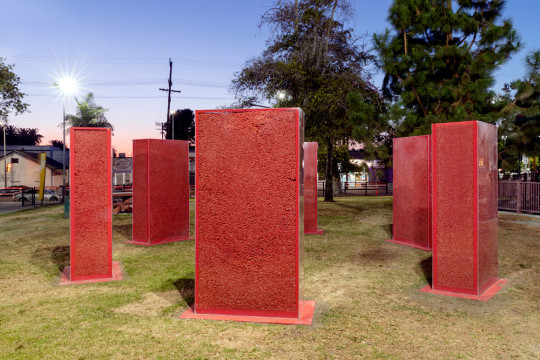
I reviewed this year’s edition of the City of Los Angeles’ public art triennial for Art in America. The theme was food, and while the meals and dinners were forgettable, the installations engaged seriously with questions about race and class, health and the environment. That’s Jazmin Urrea’s Stonehenge-like junk food monument, filled with Flamin’ Hots, housed in transparent plastic structures made from wooden frames and concrete bases—the stuff of cheap construction, recalling decades of broken promises to boost the economy of South Central through redevelopment and urban renewal.
0 notes
Photo
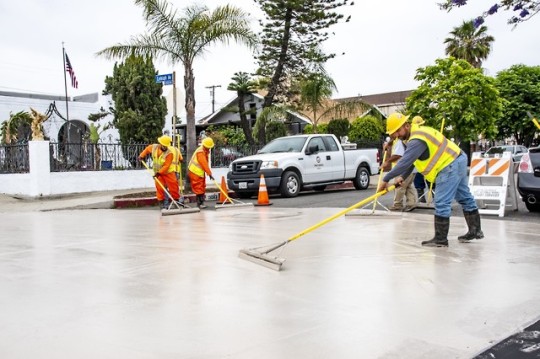
Los Angeles is trying to cool down by covering streets in surfaces that reflect the energy from sunlight, rather than storing it and converting it into heat. I got a look at some early tests, and that reflected sunlight doesn’t disappear. It gets absorbed by pedestrians, and makes them feel much warmer—as much as 7 degrees on a hot, sunny day, and it could be worse for people with dark skin. I wrote about these problematic “cool pavements,” and related issues of comfort, public health, and climate change, for CityLab.
1 note
·
View note
Photo
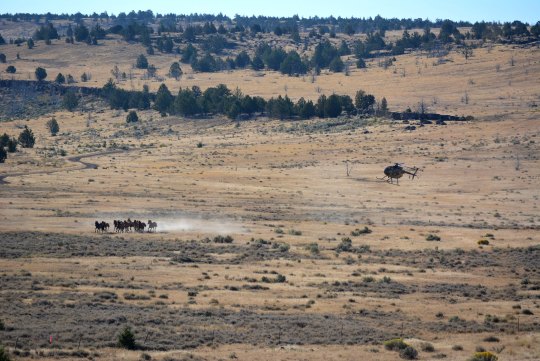
Wild horse slaughter has been banned in the United States for decades, ever the Congress declared the animals to be “living symbols of the historic and pioneer spirit of the West.” But that law has a loophole, and it’s one that “kill buyers” use to buy the horses and send trailers full of them into Mexico and Canada, where they’re processed into meat. Animal activists desperately want wild horse slaughter to end, but cattle ranchers say it’s needed, because it helps control their finite supplies of water and grass. I wrote about the strange, secret horse meat trade at The Counter.
0 notes
Photo
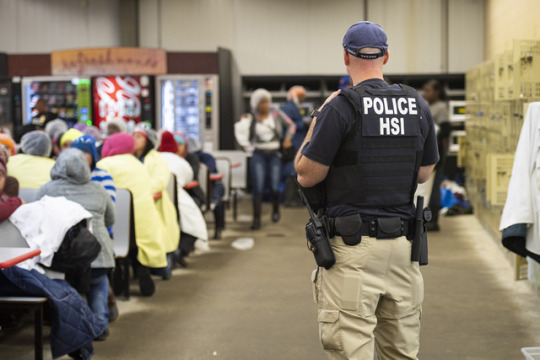
A few weeks ago, ICE agents raided seven chicken plants outside Jackson, Mississippi, rounding up hundreds of immigrants suspected of working in the U.S. illegally, in what’s been described as the largest single-state sting in history. Some of those workers had blown the whistle on their employer, Koch Foods, reporting heinous workplace abuses, and received temporary amnesty to ensure they wouldn’t be deported. For The Counter, I talk to one those workers, a woman named Thelma, who told me how the U-visa protected her during the raids.
0 notes
Photo
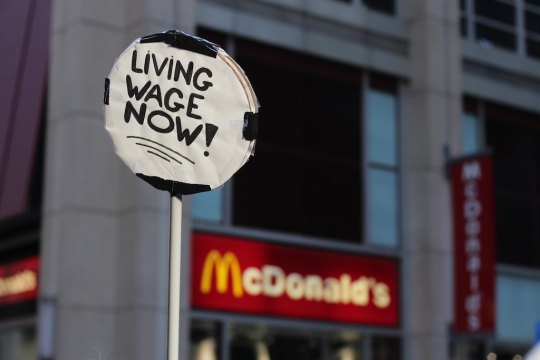
Restaurants are America's least-unionized workplaces, with just around 1 percent of workers paying union dues. That's never made sense to me. The working conditions are poor, the pay is low—why haven't unions, which have done so much to lift people out of poverty, done something about it? I did a deep dive into the history of restaurant organizing, and tried to tell the story of what happened at Bacchanal, a New Orleans wine bar where the workers were on the cusp of a union. The story's on The Counter, and I talked more broadly about restaurant unions and activism on WDET, Detroit's NPR station.
0 notes
Photo
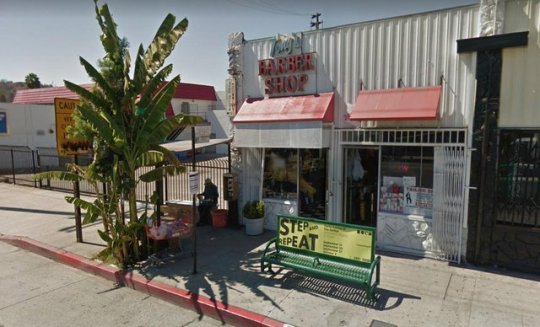
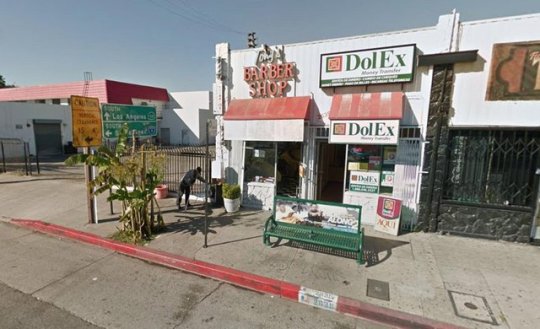
For Places Journal, I took a close look at the politics of shade—as in, what’s under a tree, or an awning, or a bus shelter. As deadly, hundred-degree heatwaves become commonplace in Los Angeles, I make the case that civic leaders should come to see shade—something so simple and elemental—as a resource to be shared by all.
But Angelenos have a complicated relationship with shade. They show up at planning meetings to protest tall buildings that would block views or darken sunbathing decks. Police urge residents in high-crime neighborhoods to cut down trees that hide drug dealing and prostitution. Business owners, as you see above, try to build their own shelters for busriders sweltering in the heat, which the city then takes down.
You might trace this back to a cultural obsession with shadows and spotlights, drawing a line from Hollywood noir—in which long shadows and unlit corners represent the criminal underworld—to the contemporary politics of surveillance. This is a pretty long essay, so if you don’t have the time to read, I summarized the good stuff in a Twitter thread. Or you can listen to me blab about it on 99% Invisible, KCRW’s Design and Architecture, and Not Built For Us, a podcast about environmental inequality.
1 note
·
View note
Photo
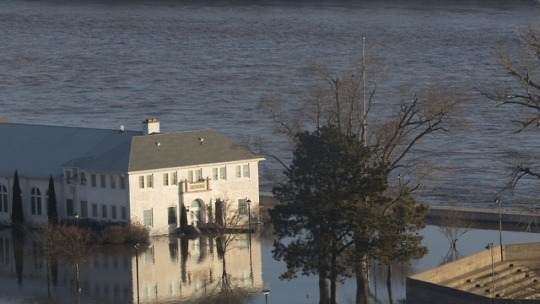
Last week, I was on KCRW, Los Angeles’ preeminent public radio station, talking to Evan Kleiman of Good Food about flooding in Nebraska. I’d been covering the floods, and talking with grain and cattle farmers about the devastation, for The Counter. This photo doesn’t quite get it—yes, there are glassy vistas, with grain silos poking out. There are also tens of thousands of farmland acres buried under inches of sand, upon which rest 40-foot icebergs that drifted in off overburdened rivers.
1 note
·
View note
Photo

Last fall, I started reporting on rural broadband, and people kept telling me that the data the FCC relies on to make funding decisions, and allocate billions in federal subsidies, is wrong. In Iowa, at least, it's really, really wrong. The agency relies on advertised coverage, self-reported by internet companies, when awarding rural broadband subsidies—even when actual, on-the-ground speeds are glacial. The system is leaving rural America behind. I wrote about this dilemma for The Counter.
2 notes
·
View notes
Photo
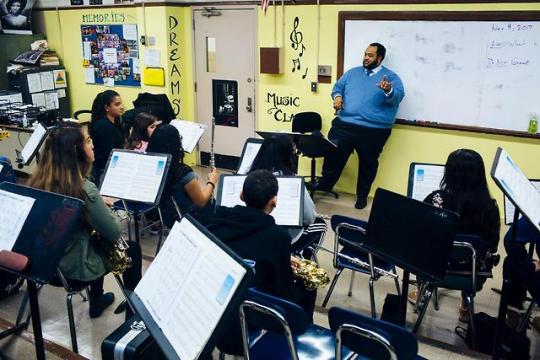
I spent a few months, and part of my time as a student at Columbia, looking into what happened to some of the Bronx’s storied high school concert bands. When the comprehensive schools were broken up, and transformed into campuses of five or six small individual schools, the band programs died, because no single school was able to field enough students to put together a real band—especially when the pool of students barely had a musical education to begin with. I reported on this decline of music education in my first story for The New York Times.
0 notes
Photo
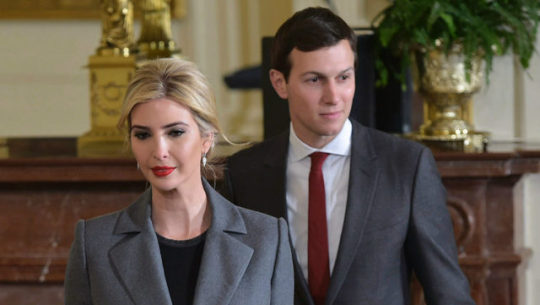
Unlike other members of the Trump administration, Jared Kushner wasn’t going to disclose his wife’s art collection—which was eventually revealed to be worth up to $25 million—until I asked the White House about it. "Mr. Kushner and Ms. Trump display their art for decorative purposes and have made only a single sale,” his lawyer told me. “To avoid any doubt, however, they will report their art collection.” This Artnet scoop was written and reported with my colleagues at Columbia Journalism School.
0 notes